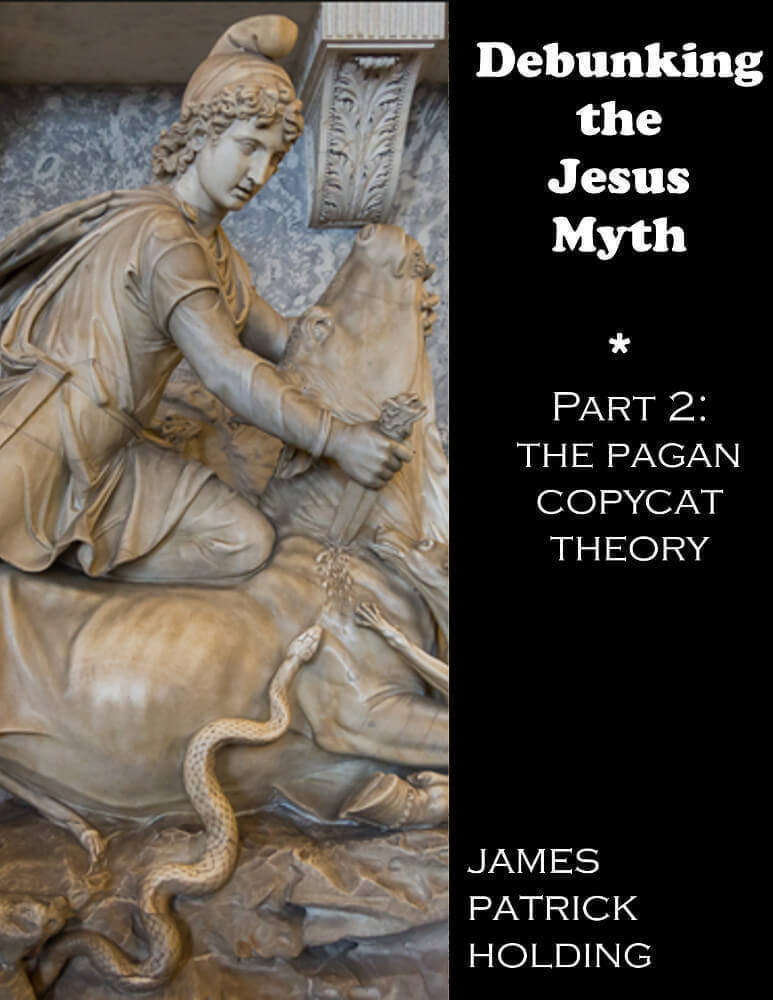Mythicist claims regarding Buddha simply wither away, most often for lack of substantiation. Will Krishna fare any better?
In a sense, yes. Many of the claims mythicists make about similarities between Jesus and Krishna have some merit, in terms of being similar. For example, these have at least some element of truth in them:
Krishna was born of the Virgin Devaki or “Divine One” on 12/25.
This is true to the extent that Krishna is not clearly said to be conceived after sexual intercourse, but was transferred from the mind of his mother’s brother. But his mother had had seven children prior to this, and so was obviously not a virgin! December 25th is not his birthdate; he was born in the summer.
His birth was signaled by a star in the east and attended by angels and shepherds, at which time he was presented with spices.
There were rough equivalents to angel’s present, but there were cowherds, not shepherds, and flowers from heaven, not spices.
He was persecuted by a tyrant who ordered the slaughter of thousands of infants.
Completely true.
Krishna was anointed on the head with oil by a woman whom he healed.
Close…he was offered ointments by a woman with a hunchback, and then he healed her.
He is depicted as having his foot on the head of a serpent.
Again, Mel Gibson notwithstanding, this just isn’t said of Jesus…but Krishna did dance on the head of a serpent with a thousand heads in order to defeat the serpent.
He worked miracles and wonders, raising the dead and healing lepers, the deaf and the blind. He gave his disciples the ability to work miracles.
He did heal people and perform miracles, and some of his followers did miracles too.
Krishna used parables to teach the people about charity and love, and he lived poor and he loved the poor.
Only partially true: Krishna was not particularly poor; he did teach, and charity and love were among his subjects, but not using parables.
He castigated the clergy, charging them with ambition and hypocrisy.
He did criticize the priestly Hindu caste for being too concerned with their rituals.
Krishna’s “beloved disciple” was Arjuna (John).
The names are correct, but there is no linguistic connection between the two names.
Krishna was killed around the age of 30, and the sun darkened at his death.
Krishna was well over 100 when he died, and there were certain “astrological omens” when his death took place.
He rose from the dead and ascended to heaven in the sight of all men.
He did ascend, though without his body!
Krishna is to return to judge the dead, riding on a white horse, and to do battle with the “Prince of Evil,” who will desolate the earth.
Sort of: It will be a future incarnation of Krishna named Kalki, who will indeed ride a white horse, and kill everyone.
Other elements claimed, in contrast, are completely false:
He was transfigured in front of his disciples. His path was “strewn with branches.”
In some traditions he died on a tree or was crucified between two thieves.
He was depicted on a cross with nail-holes in his feet, as well as having a heart emblem on his clothing.
Krishna is the lion of the tribe of Saki.
He was deemed the “Son of God” and “our Lord and Savior,” who came to earth to die for man’s salvation.
He was the second person of the Trinity. No, but he was one of ten avatars of Vishnu.
His disciples purportedly bestowed upon him the title “Jezeus,” or “Jeseus,” meaning “pure essence.”
However, all such parallels are moot, for the evidence shows that all borrowing was done in the opposite direction.[1] “[T]here can be no doubt that the Hindus borrowed the tales [from Christianity], but not the name.” We are free to admit the parallels, but their meaningfulness can be denied in one fell swoop.
Notes
[1] Licona, op. cit., quotes Benjamin Walker, The Hindu World: An Encyclopedic Survey of Hinduism, Vol. 1 (New York: Praeger, 1983), 240-241.
